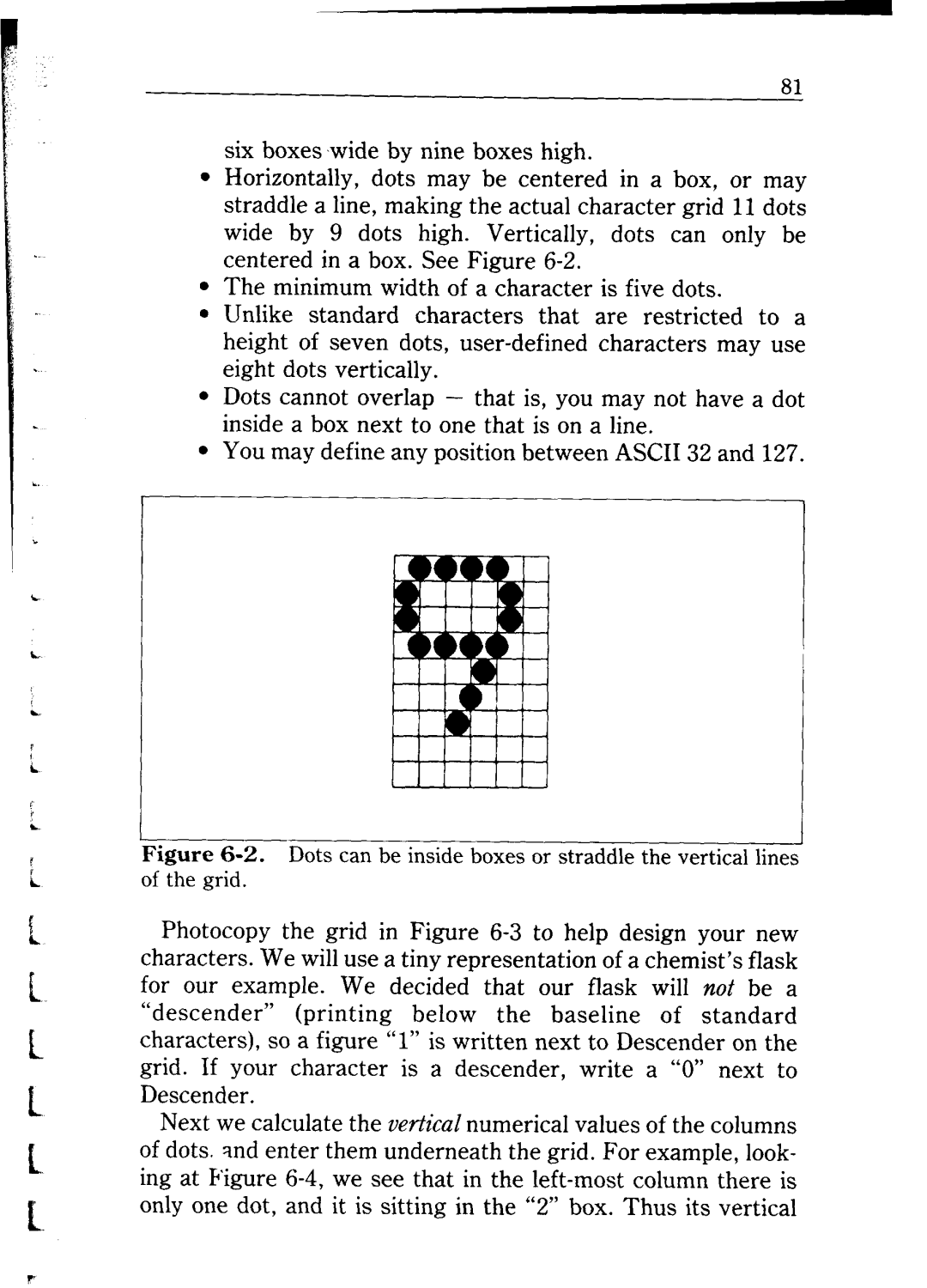
81
six boxes ,wide by nine boxes high.
•Horizontally, dots may be centered in a box, or may straddle a line, making the actual character grid 11 dots wide by 9 dots high. Vertically, dots can only be centered in a box. See Figure
•The minimum width of a character is five dots.
•Unlike standard characters that are restricted to a height of seven dots,
•Dots cannot overlap - that is, you may not have a dot
inside a box next to one that is on a line.
•You may define any position between ASCII 32 and 127.
c.
i |
|
|
|
|
|
|
|
|
| ||
i | Dots | can | be inside | boxes | or straddle | the vertical lines | |||||
Figure | |||||||||||
of the grid. |
|
|
|
|
|
|
|
|
| ||
L | Photocopy the grid in Figure | ||||||||||
| |||||||||||
c | characters. We will use | a tiny | representation | of a chemist’s flask | |||||||
for our example. We decided that our flask will not be a | |||||||||||
| |||||||||||
L | “descender” | (printing | below | the | baseline | of | standard | ||||
characters), so a figure “1” is written next to Descender on the | |||||||||||
| |||||||||||
L | grid. If your character | is a | descender, | write | a “0” next to | ||||||
Descender. |
|
|
|
|
|
|
|
|
| ||
Next we calculate | the | vertical | numerical | values | of the | columns | |||||
i | of dots. and enter them underneath the grid. For example, look- | ||||||||||
ing at Figure | in the | column | there is | ||||||||
Ii.. | only one dot, and it is sitting in the “2” box. Thus its vertical |
|
F
